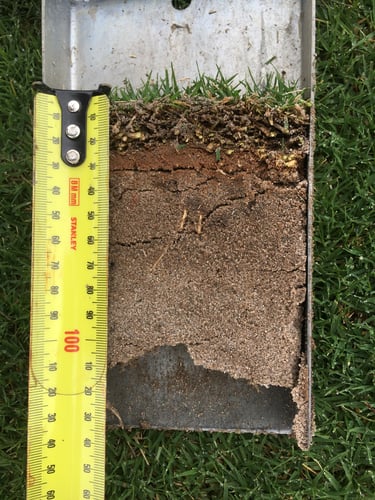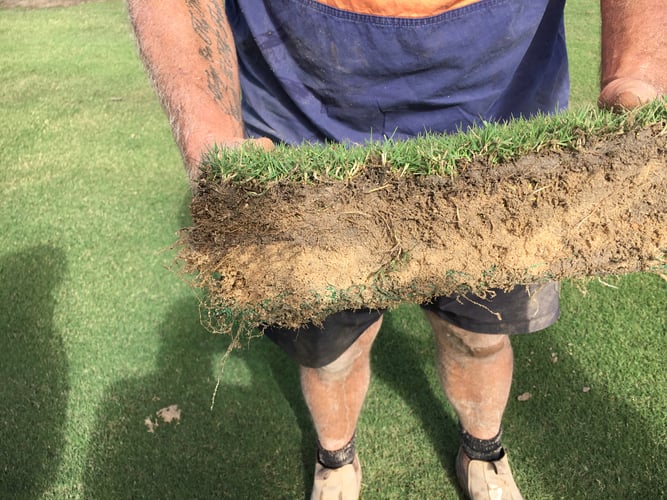Agronomy can be broadly defined as the application of science and technology from the fields of biology, chemistry, economics, ecology, soil science, water science, pest management and genetics to the improvement and management of the major food crops of the world.
Source: About Agronomy
Turfgrass agronomy fits well into this definition with the difference being that turf agronomy is about presenting turf surfaces that are fit for the particular sport and safe for play rather than producing a harvestable crop.
Turfgrass agronomy encompasses many facets including turfgrass genetics, turfgrass physiology, irrigation and soil science. Turfgrass agronomy is a science that looks at turf management from an integrated, holistic and practical perspective that influences the practical management techniques employed in maintaining turfgrass systems. Professionals in the field of turfgrass agronomy are called turfgrass agronomists.
What is Turfgrass Agronomy?
Turfgrass Agronomy involves an understanding of how all the elements of a turfgrass system interact to provide a playing surface. This involves an understanding of many factors such as:
- Rootzone characteristics such as soil type, moisture retention, compaction, drainage and aeration. The function of the rootzone soils is the basis of maintaining a “fit for purpose” turf surface.
- Turfgrass nutrition and the role that individual nutrients play in turf health, turf growth and recovery from wear.
- The attributes of different turfgrass species and cultivars as they relate to climate, susceptibility to pests, wear tolerance and recovery from damage.
- Turfgrass insect pests, diseases and weeds and the impact they can have on turf health and surface presentation.
- The chemistry and mode of action of plant protection chemicals such as herbicides, insecticides and fungicides.
- Turfgrass water use, water quality and irrigation management. Water is a key input that must be managed in a sustainable and efficient manner.
- Climatic effects on turfgrass management.
- Microclimate effects on turfgrasses such as shade and poor air movement.
The role of the turfgrass agronomist is often to be a problem solver when there is deterioration in turfgrass health and surface performance. The skill of the turfgrass agronomist is to be able to assess all of the above factors to determine the primary cause(s) of the problem and to prescribe practical solutions. Note: Very few turf problems are as the result of a single factor.
Where does Turfgrass Agronomy fit within sports Field of Play design?
Designing, specifying and constructing a sports field that is going to be fit for purpose involves several key agronomic components:
- Designing a profile that is going to provide a playing surface that meets client requirements.
- Selecting and specifying soils for the rootzone. This is particularly important in areas where there are limited soils available that meet the specific requirements for turf rootzones.
- Providing recommendations on turfgrass selection and management to meet the users requirements.
- Preparing specifications for soil amendments and turf establishment.
- Providing turf management plans for preparing an appropriate surface for the intended use. This includes plant nutrition, irrigation, turf renovations and pest, weed and insect control.
- Developing surface performance criteria including surface hardness, traction, surface levelness etc.
Why is Turfgrass Agronomy important when designing Fields of Play?
Designing and building sports fields is relatively straight forward agronomically. However, the downfall of many projects is the post-construction maintenance. To get the best out of the capital works and to maintain the quality of the asset, the ongoing agronomy program is critical. The agronomy program needs to be flexible and able to respond to changing circumstances (e.g. increased wear) and will include the following:
- Fertiliser/nutrition program including soil testing aimed at encouraging strong growth and good recovery from wear.
- Irrigation program that promotes healthy turf growth and has a high level of water use efficiency.
- Pest and weed control.
- End of winter sports renovation program including organic matter reduction and compaction control.
- Turf repairs.
- Monitoring program that allows a review of surface performance and turfgrass response as it relates to the maintenance program.
Project examples where we've applied these principles
Nillumbik Shire Council Sports Ground Condition Audit – The project involved assessing the condition of 21 sports fields including soil conditions, irrigation, turf quality, surface performance and safety.
NQ Cowboys CoE training field – Profile design, sand selection and grass selection
Aspendale Gardens (Kingston Council) soccer fields – Sand slit and sand carpet system to provide a workable option on a difficult site
North East Link Projects – Binnak Park and Ford Park Ovals – Detailed assessment for final sign off. Includes measuring the infiltration rate, traction, surface hardness and soil moisture content.
 Monitoring thatch accumulation is part of turfgrass agronomy process
Monitoring thatch accumulation is part of turfgrass agronomy process
Baranduda Sports Precinct Wodonga – Pre-planning assessment of profile design, drainage, sand selection/availability, turf selection to meet the objectives of providing a high level soccer surface.
Bass Shire Oval Assessment – Assessment of Cowes Oval and Wonthaggi Ovals including soil profile examination, turf assessment, soil nutrient analysis – purpose was to determine potential for upgrade.
WA State Football Centre - Pre-planning assessment of profile design and turf selection to meet the objectives of providing a high level soccer surface. The project involved a detailed soil survey to assess the site soils for use in the construction of the fields.
Sydney Football Stadium – Detailed review on the impacts of shade on turfgrass physiology and surface management and remedial action (e.g. use of grow lights).
 Turf inspection at the Sydney Football Stadium
Turf inspection at the Sydney Football Stadium
SPORTENG Turfgrass Agronomist is regularly undertaking research trials on turfgrass agronomy issues such as turfgrass selection, sand selection, herbicide trials for weed control and the impact of shade on turf condition.
For further information or questions/remarks on this topic, feel free to reach us anytime!

